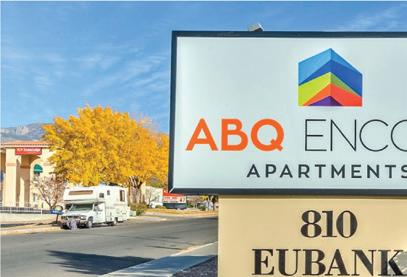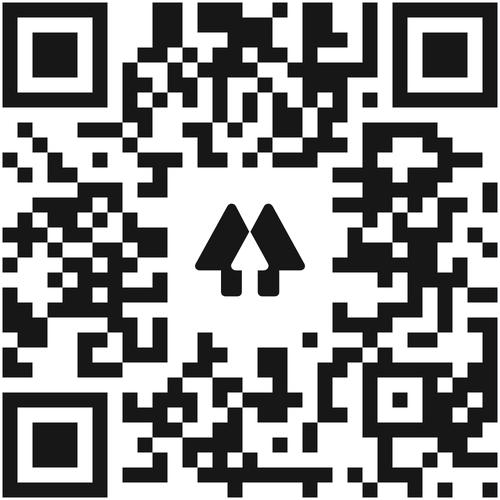
















The playlist “Pride Bangers” was created by the editorial staff of the Daily Lobo and to celebrate a couple of certified bangers, specifically songs that elevate and express Queerness.
Additions like “Call Me Maybe” capture catchy pop perfection and excitement on the dance floor, while “Fast Car” exemplifies yearning for something bigger with a tender chosen partnership. Lady Gaga’s “Born This Way” and “G.U.Y.”
answer Queer anxieties with captivating beats, lyrics and messaging that display confidence and pride.
All these songs allow Queerness to thrive, both as dance floor staples and emotional car ride performances.
Music, art, publications and movements have long been created by Queer people, specifically Queer people of color. The Daily Lobo Pride Issue recognizes the roots and influence that Queer people have made on culture, and the songs on this playlist were picked with the mindset of empowerment and celebration.



The songs chosen honor both
These are only a couple of songs that get us dancing, singing and celebrating. Use this playlist as the soundtrack to your reading experience. Natasha Bedingfield’s “Unwritten” was meant to accompany and elevate the contributions that the local Queer people and groups have made to the community.
In pursuit of activism and pride, The Association for Jotería Arts, Activism and Scholarship at the University of New Mexico meets twice a month to organize events and create a space for Queer Latine, Chicanx and Indigenous students.



AJAAS – a national collective of artists, activists and scholars –has existed since 2005.


Their name and organization reclaims a Spanish slur against Queer people, focuses on ac-
tivism and community, AJAAS member Lama Quiroz said.
“It’s a way to reclaim that word in order to empower ourselves,” Quiroz said.
The UNM chapter has been centered around education of the histroy and culture of the chicano power movement, Quiroz said. AJAAS attended the Latinx Visions conference along with hosting book club meetings this past year.
“A lot of the work that we did this past semester has been on education, or more so educating ourselves on what we are – how gender and sexuality is rooted
here in the U.S. Mexico Borderlands,” Quiroz said.

AJAAS has created an important space on campus to express both her Latina and Queer identities, Quiroz said. The organization represents and understands both identities, contrary to other predominantly white Queer spaces.
“I wanted to be in a space where I felt like I belonged,” Quiroz said. “Especially since I’m a trans-Latina and there aren’t many other Queer people like me who are Queer, Latina, Queer Chicanos and I didn’t want to be isolated.”
Marcela Johnson – the secretary of AJAAS – finds that both their Mexican and Queer identities influence the way they express themselves. Mexican and Queer principles of community are felt throughout the club, creating an environment that allows people to feel comfortable expressing themselves.
“There’s a lot of community in both and just the use of communal spaces and sharing. I especially see this present within our group … I also personally do a lot with fashion so I feel like having both of these identities directs the way that I express my-
self,” Johnson wrote.
Self-expression through art is a common practice in AJAAS, Quiroz said. Along with finding community in activism, it has allowed her to connect with others in the club.
“I like expressing my Queer Latinidad through my art or through my music. Others in an AAJAS express it in various ways that I am able to connect with. For example, Queer Chicano punk or standing up for our rights when they are threatened,” Quiroz said.
Music has long played a role in Chicano protest. Ozomatli
see AJAAS page 5

Adobe Creative Commons




Audio booths, equipment check-out, digital media learning and support, and more.


goto.unm.edu/acc

Digital Textbooks
Looking for eTextbooks and inclusive access options?



bookstore.unm.edu
The UNM IT Service Desk is available Monday - Friday 7:30AM to 5:00PM.
505–277-5757

Computing Needs UNM computing, printing, software, device checkouts, and internet access resources.


computing.unm.edu
Lobo BrainBar
UNM Bookstore

Substantially discounted, UNM-only pricing, for topline pre-configured systems.

it.unm.edu/computers
LoboMobile Lobo Guardian Safari Books
Mobile app that increases user safety.


Need information on class schedules, financial aid, and your paycheck?
Looking for free eBooks and tutorials?



On-site laptop support for UNM students, faculty, and staff.

lobobrainbar.unm.edu
Education pricing on computers and tablets at the Tech Den.
bookstore.unm.edu
UNM Canvas
Course access and materials for most campus, remote, and online instruction.


Where’s My Bus?
Need help getting to and from campus?
NOTICE • UNM IT will never ask for your NetID password through email, even for a password reset. PhishBowl.UNM has a list of up-to-date phishing emails targeting the UNM community.

The Adderall shortage continues to impact those on the medication, including members of the Queer community who are more likely to be neurodivergent. Multiple studies find a correlation between neurodivergence and Queerness.
Adderall is the most commonly used medication for Attention-deficit/hyperactivity disorder; 50-70% of autistic folk have ADHD and the drug has faced a shortage since Oct. of 2022, forcing millions to go without their medication.
“There is a link between certain neurodiversities and being Queer. They’re also linked in that way where there is a disproportionate amount of people who identify as both Queer and neurodiverse in some way,” Tiziana Friedman said.
Friedman – a trans student at the University of New Mexico majoring in Africana studies and Women, Gender and Sexuality studies – was recently impacted by the Adderall shortage.
Not being able to fill their regular prescription, Friedman said, has impacted other areas of their mental health, including worsened anxiety and depression amidst constant anti-Queer legislation.
“Especially being a trans person at the moment in time that we’re living in, my coping strategies were not as effective for dealing with the constant onslaught of an-
ti-trans legislation,” Friedman said. The UNM Student Health and Counseling pharmacy manager, Monica Martinez, said the shortage has been frustrating for students and staff alike. SHAC has been able to, on occasion, order and provide the drug. While everyone’s insurance is different, some students’ plans have allowed them to fill brand names at a generic price, Martinez said.
What has caused the Adderall shortage has been deeply convoluted. Being a controlled substance, the Drug Enforcement Agency sets caps on the amount of the medication producers can make.

Teva, a manufacturing company, has said that the cap has played a role in the shortage, Bloomberg reported. Prescription fills have also increased by 10% from 2020-2021, according to the CDC, which sources have also at-
tributed to the shortage.
Attributing the shortage to an increase in diagnoses, Friedman said it is not productive and puts the blame on those who have been prescribed the medication.
Not having their regular prescription, Friedman compared their life to living in a fog; they can’t see the world as clearly and it forces them to move a lot slower. Adderall takes away the fog.
“When we’re talking about medication that you need to function, there’s only so much that coping strategies will do … At the end of the day, this is a medication that I need to function, that I don’t have,” Friedman said.
Nadia Marsh, an internal medicine doctor at UNM Hospital, said many of her patients deal with mental health issues and she has seen the impacts of the shortage at the clinic.
“This is a reflection of a for-profit capitalist society that does not have an organized system to make sure people have the medications they need, Adderall included. I don’t think it’s specific to Adderall and affects people who have the worst insurance or no insurance the most, I would say,” Marsh said.
Understanding how patients’ identities can intersect, Marsh said, is important to providing the best care she can so patients not only have the individual medical support they need, but a safe environment around them.
“I would say the majority of patients that I’m seeing have mental health issues, and then you have (that) –on top of economic oppression – lack of access to health care, facing discrimination, not having access to quality jobs,” Marsh said. “There’s so many social issues that all of these things
intersect, not theoretically, but in a dynamic way, making people very sick.”
Martinez said that students are welcome to call SHAC every day to see if they have been able to order the drug to try to fill an Adderall prescription.
Dealing with the shortage while in school as a non-traditional student, Friedman said, was extremely difficult. Earlier in the shortage, they switched to Vyvanse – another stimulant, which the shortage has since begun to impact, and Friedman said they still deal with rationing it.
“Being on Adderall was one of the things that really made me feel like I had the tools to be successful as a student. (This is my) second time around in college, and so not having access to that medication


For Queer students, finding out who your college roommate is can cause anxiety, Mara Cox – the president of Juniper Reimagined – said. While having roommates is a common practice at the University of New Mexico, for trans students it could possibly create an unsafe living environment.
“One of the biggest anxieties I personally had to face with getting a roommate you don’t know is wondering if you’ll have to hide yourself. If you do have to hide your identity, the best case scenario is just not interacting with the roommate at all – basically having to purposefully avoid them, which is hard when you live with them,” Cox said.
Living Learning Communities are one housing option that UNM offers to students. One of these communities is for gender-neutral individuals and allies.

While UNM has accommodations for the Queer community, some students from Juniper Reimagined – a student group on UNM campus that advocates for inclusivity of the LGTBQ community – says more could be done.
The gender-neutral Living Learning Community consists of one hall and has a gender-neutral bathroom. Those on the floor are all either Queer or allies and it is sectioned off from the rest of the dormitory building. Cox, who is also a resident, said that while this is a good start, it isn’t perfect.
“Coronado has a lot of good aspects – the bathrooms, inclusivity,
roommates, etc. The biggest problem it has is how far away and out of the way it is on campus. It’s farther than the rest of the dormitories, plus the hall itself is in a far side of the building itself,” Cox said.
The housing registration process in general is confusing, according to Cassandra Huneau who recently graduated from UNM and worked on the Basic Needs Project – studying college student basic needs insecurity.
“While UNM has done a much better job compared to other universities and it’s a great start, there’s still so much that can be improved upon as a whole. Especially when it comes to housing. That was one of the hardest things, personally, for me as a student,” Huneau said.
“Being on Adderall was one of the things that really made me feel like I had the tools to be successfull as a student,”
Tiziana FriedmanDesign Director Katrina Estrada
AJAAS from page 2
is a Chicano music group from Los Angeles that first met when working to unionize the Los Angeles Conservation Corps and in the protest that followed not gaining union recognition. The Chicano movement has long been involved in labor organizing, originally the National Farm Workers Association. United Farm Workers was founded by Chicano labor activists.
Unpacking and understand-





















Housing from page 4
Juniper Reimagined wants UNM to create more gender-neutral Living Learning Communities or Queer housing options, Cox said. More Queer living spaces on campus would allow trans and Queer students to feel more comfortable and safe, Cox said.
“While the hall in Coronado is great for us, there shouldn’t just be
Adderall from page 4 reliably made it extremely difficult to get all of my things done. And then, stay on top of my schoolwork,” Friedman said.
While professors have been accommodating during the shortage, Friedman said that this has not always been their experience
ing Mexican-American history and the roots of Latinx struggle in class and union organization, Quiroz said, has been a part of the educational goals of the club. They focus on translating those values into the work they do now.
“Having the space also helps me to contribute to and help my community,” Johnson wrote.

“We’re also such a diverse group that even with similar traits, we
one hall, there should be a lot more,” Cox said.
UNM ranked fourth of best colleges for LGBTQ students in the United States by BestColleges. Aragon attributed the ranking to the multiple student organizations, like Juniper Reimagined, that work for the betterment of Queer students.





“We need to keep pushing for im-
seeking accommodations, and they attribute it to the Africana studies and WGSS departments.
“Because of the area of study that I’m in, my professors are tending to be a little bit more understanding, like ‘You’re a student, but you’re also a human be-
have so many different experiences and we can all learn from each other. I feel that as a community, this space makes us stronger.”
Expressing herself through art, Quiroz said, she has found pride in herself through the space that AJAAS has created to educate and find community.
“I’m proud to be a trans Queer person, or a Queer Latina person, or more so standing up for
provement because, while things are good – a fact we are all happy about – we have lived too long in the dark to give up now,” Aragon said.
BillyJack Davidson is a freelance reporter at the Daily Lobo. He can be reached at sports@dailylobo. com.

ing.’ I have been in other programs at UNM where I’m sure that that is not the case,” Friedman said. Understanding how identities intersect is crucail for liberation, Friedman said. “Mental health and access to medications relating to mental
our rights or showing the growing pains of living the way we are,” Quiroz said.
Maddie Pukite is the editorin-chief at the Daily Lobo. They can be contacted at editorin-
chief@dailylobo.com on Twitter @maddogpukite
health and neurodiversites is part of the struggle towards collective liberation,” Friedman said.
Maddie Pukite is the editor-inchief at the Daily Lobo. They can be contacted at editorinchief@ dailylobo.com on Twitter @maddogpukite

 By SYDNEY WALKER @squidneywrites
By SYDNEY WALKER @squidneywrites
Pandora
Tattooing for the last three years, Torres said that the majority of her clients are Queer. Her top priority, she said, is to ensure her clients feel safe and comfortable.

“Spiritually speaking, I feel as though tattooing is a huge exchange of energy and it would be irresponsible of me to go into such an intimate procedure without making sure that everyone is happy, feels safe, comfortable and – above all – comfortable commu-














nicating with me,” said Torres.







Professionally tattooing for over five years, Baby Atchison – a trans tattoo artist and owner of Holy Fool Tattoo Club – said he was drawn to the tattoo industry because he felt like he didn’t belong in normative culture, and now wants to ensure a positive experience for others.

“I’m cautious to label any space safe because I have no control over anyone else’s internal experience,” Atchison said. “However, a great deal of my clients are Queer, trans and have different bodies. I think they return to me because of the experience they have sitting in my chair.”













Atchison said it has been difficult for people of color, women and the LGBTQ+ community to have adequate representation in the tattoo industry. The inter-

net, Atchison said, has helped to provide a platform for Queer and femme artists.
















“There were women tattooing, but I hadn’t heard of them or seen their picture, let alone anyone like me with a trans experience,” Atchison said. “I think the industry is changing; representation is always something that makes those shifts happen in a big way.”
Specializing in the hand-poke method, Sawyer Sverre-Harrell works out of a private studio in Santa Fe. The tattoo industry is rapidly growing, but the spaces are not always welcoming to Queer artists, Sverre-Harrell said.

“I think being trans – regardless of if people realize I’m trans or not – just being openly Queer can sometimes have certain people in see Tattoos page 16




















 By MILAN ORTIZ-RUIZ @DailyLobo
By MILAN ORTIZ-RUIZ @DailyLobo


In February, a bill protecting reproductive and gender-affirming health care was signed into law in New Mexico.
The Reproductive and Gender-Affirming Health Care Act protects patients seeking reproductive and gender-affirming health care in every part of New Mexico, according to Representative Linda Serrato (D) – a sponsor of the House Bill.
“This is especially important in rural communities that have historically lacked access to care,” Serrato said.
Frankie Flores, Education Specialist of the LGBTQ Resource Center, said that greater access to gender-affirming health care will further protect New Mexico’s trans and non-binary community.

“We have seen a lot of antitrans rhetoric in the media so I believe that the passing of House Bill 7 helps ensure that we are going to have our youth protected,”
Flores said. The LGBTQ Resource Center at the University of New Mexico works with entities like the Office of Equal Opportunity and the UNM Policy Office that guarantee that transgender and gender non-conforming students have impartial access to education, employment and advising opportunities on campus, Flores said.
Gender affirming care is safe and evidence-based medical and mental health care that helps transgender and non-binary people live safe, happy lives, Serrato said.


“We also know it helps prevent suicide. Access to this care is the most influential factor in the health, safety and life-expectancy of trans and non-binary people,” Serrato said.
UNM student groups have organized to uplift Queer voices. These student groups include the Queer Student Alliance, UNM Association for Jotería Arts, Activism, Scholarship, Lambda Law Student Association and LGBTQ Students and Allies in Healthcare.




The legislation protects people in all areas of the state, including overruling rural counties’ recent restrictions. “What that means in practice is no matter what corner of our state you call home, your right to access this essential healthcare is protected,” Serrato said.
“This law prohibits public bodies, including local municipalities from denying, restricting or discriminating against an individual’s right to use or refuse reproductive or gender affirming care,” Serrato said.
New Mexico promptly became a sanctuary state for those seeking reproductive and gender affirming care from surrounding states, following the passage of the legislation.

“Our majority female House of Representatives already had some protections in place to keep access a right in our state. Since then, we’ve prioritized making this healthcare more accessible, not less. While other states attack and politicize intimate healthcare, we’ve become a safe haven for all those who seek and provide this care,” Serrato said.
The protection of rights to healthcare in New Mexico is inherent to the state’s values, Serrato said.
“The heart of New Mexico is in our familia so it’s no surprise we are a national leader in protecting essential health care and rights for our families,” Serrato said.
Milan Ortiz-Ruiz is a freelance reporter at the Daily Lobo. She can










































Queer people of color created house music, a Queer DJ, promoter and producer in Albuquerque, Justin Cristofer said. Cristofer aims to take the idea of a Queer DJ and expand it beyond pop music as well as highlight the history of house.

House is a music genre characterized by having four-to-the-floor musical patterns and the tempo of 120 beats per minute, according to Harper’s Bazaar. Bringing house music to Queer Albuquerque spaces, Cristofer said, honors the history of the genre.


Cristofer designs his sets with the intention of creating safe spaces for Queer people by amplifying new Queer artists, Cristofer said. The artists that he plays put Queer power and energy into their tracks. One of his favorites – “Mutant Exotic” by LSDXOXO – displays Queerness through its lyrics.
“It is so fiercely Queer, and the way that the song was created –It’s a house song … The song does so well in Queer spaces because of the lyrics … When I heard this song, I immediately fell in love with it. I was like, this is an artist that I need to put out there because not many people know who they are,” Cristofer said.
Jonah Salazar y Tafoya – the co-founder of CÉNIT, a Queer and BIPOC party collective – creates art installations and designs the lighting for the party venues. She likes to make the audience a part of the production with pieces like leopard print telephones and flowers that people can play with and take pictures of, Salazar y Tafoya said.
Salazar y Tafoya started CÉNIT with Jordan Magnuson and Roberto Claudio. They are interested in finding ways to get Queer people together by throwing parties to celebrate and create community, Salazar y Tafoya said.
“We were like, ‘We need an ac-



tual space here that’s safe for other Queer, brown and black people’ … Everything is so spread out (in Albuquerque). So we were like, ‘Let’s just figure out a way to get everybody to the same space (and) have community,’” Salazar y Tafoya said.



In addition to including songs covered and created by Queer people, Cristopher said he includes songs that the Queer community loves. Songs like “Two of Hearts” by Stacey Q that got popular through the Queer-centric film “Party Monster” often finds its way into his sets. The Queer influence surrounding the song and its ability to get people dancing, Cristofer said, creates a space for Queer people to come together and sing about love.
Creating spaces for Queer people to dance in is important because it can foster a healing experience, Salazar y Tafoya said.
“I’ve always found that going to a space where I know there’s gonna be Queer people, I feel so much better. I go to a lot of raves and I’ve always found the function to be a really healing place ‘cause it’s kind of the only time you get to dance it out. It’s a lot of body move-
ments – a lot of releasing,” Salazar y Tafoya said.










Messages of empowerment and community are important to center when creating music for Queer people. Cristofer said when he performs in Queer spaces, he plays lots of “bangers” – songs that get people dancing and singing to every lyric in order to fulfill that message.
“It’s all about the message and the beat. You have to have both for Queer people to really be drawn in. I think because Queer people love to dance and – above all – we are not afraid to dance,” Cristofer said.
When Cristofer plays sets in spaces that are not inherently Queer, he said he tries to sneak in Queer anthems – testing his audience with songs like “Call Me Maybe” and “Rain on Me.” Including Queerness in his sets, whether playing in a Queer space or not, is an integral part of his mission.

“I really work to be as Queer as possible when it comes to all of my DJ sets. Even if I’m playing somewhere that is not used to a lot of Queer DJs coming in and playing certain songs … I really think
see Anthems page 16






 By ADDISON KEY @AddisonKey11
By ADDISON KEY @AddisonKey11




Utilizing a variety of mediums and the color pink, Carmen Selam uses pop-culture references and specific colors to amplify themes of Indigeneity and Queerness in her artwork.
Currently, she is experimenting with risograph printmaking to create a zine titled “Resbians,” a combination of the words “lesbians” and “reservation.” Selam is Yakama and Comanche, and said she finds herself incorporating those two identities throughout her artwork. She calls
herself “Yakamanche” – a combination of the two.














Selam started calling herself an artist when she moved to Santa Fe in 2011 to attend the Institute of American Indian Arts. Many people describe her work as pop art, Selam said. Santa Fe introduced Selam to the contemporary art market and she began to contextualize her work in the Native art canon.


“I think my art is traditional in the sense that I’m very rooted in where I’m from, so on my reservation. But it’s also contemporary in the sense that I’m a Native person existing now,” Selam said.













Tackling gender and identity, Selam finished her Master of Fine Arts
show titled “Switch Dance” at the IAIA. The term “switch dance” refers to a practice in powwows where you wear regalia of the opposite gender, Selam said. Selam used to switch dance with her brother.
“It was a lot about grief protocols and my relationship with my late brother … That was really about honoring that relationship, honoring that space and redefining what it means in a contemporary society as a Yakama Comanche woman,” Selam said.



The MFA show was emotionally charged, and for the rest of the summer, Selam said she is focused on having fun. She was chosen as the artist-in-residence at Risolana – a
community risograph studio and nonprofit.





Through the program, artists are able to pick one ink color to add to Risolana’s collection. Selam picked a mauve-pink – a color that represents a ‘90s kid’s nostalgia and was present in many of her past paintings, Selam said.
“Inside of (one of my) painting(s) is imagery of a Polly Pocket, but it represents things on a reservation within it. The background for that painting was a light mauve-pink. As soon as I saw that color as an option, I was like, ‘This is the one, this is the color,’” Selam said.































































With 6 new people on staff and summer classes in full swing, the Daily Lobo has spent the summer in the newsroom, writing stories. Below is a sampling of some of the work that has gone out in the Daily Lobo email newsletter this summer. All stories can be read in their entirety at Dailylobo.com

UNM Housing expands use of triple dorms
July 19 - Last Monday, students were notified via email that UNM Resident Life and Student Housing would convert multiple double rooms to a three-person capacity in order to meet housing demands.


The halls with rooms that can be converted into triple capacity dorms include Coronado, Hokona, Santa Clara and Alvarado. The exact cost of the rooms were not given by Megan Chibanga – Director of UNM Resident Life and Student Housing. However, students in these rooms will have a reduced rate compared to traditional double rooms, according to Chibanga. Marcela Johnson reports.
Art educators challenge ‘art world’ July 19 - Marina Perez, a con-









temporary Indigenous arts PhD student at the University of New Mexico, struggles with the concept of the art world.

The art world often creates barriers for communities of color, which makes it harder for them to enter it, Perez said. It produces a binary between fine arts and community arts, contemporary arts and ancient arts. The separation, they said, often makes it hard for people of color to participate in the art world.
“The art world is a colonial construct. To even think that we need to construct a completely different world away from our everyday lives … Communities of color don’t have access to be able to enter the art world,” Perez said. “Our knowledge is not embraced or acknowledged.”

Addison Key reports.
Lack of maintenance for parks in Albuquerque causes harm to communities
July 14 - Amidst New Mexico’s summer heatwave with temperatures in the 100s, concern has spiked over the inadequate maintenance and neglect of parks in communities of color and lowincome areas. The poor mainte-


nance of parks is an example of environmental racism.
“The dire state of these parks hinders the residents’ access to green spaces, but also permeates into environmental racism and there is a need for change,” Enrique Cardiel, a community organizer, said.
Weston Quintana reports.
Duke City Championship Wrestling makes its presence known
July 9 - Duke City Championship Wrestling is presenting a “Clash of Titans” tag-team showdown at the historic El Rey Theater on July 15. This all ages event will host eight professional wrestling matches inside the ring.
Jerry Herrera, a professional wrestler, expects this upcoming event to be just as big as the first one. The overall goal for him and his local wrestlers is to make professional wrestling a more well known sport in Albuquerque, Herrera said.
“Hopefully they (fans) are ready for the second show – more action, more wrestlers, more competition and more entertainment,” Herrera said.


Sydney Walker reports.

Curanderismo course at UNM dives into the culture of traditional healing


June 29 - During the summer, the University of New Mexico offers a two-week in-person class called “Curanderismo: The Art of Mexican Folk Healing” to allow students to connect more closely with cultural and spiritual healing.



The class takes a holistic approach to healing, Eliseo Torres said — the professor of the course. The class has many guest speakers from all over, including Mexico and Peru. Some of those guests are curanderas who specialize in the traditional healing methods of Curanderismo.
Elizabeth Secor reports.
Joe Franklin’s final run with the Lobos

June 27 - After 15 seasons with UNM’s Cross Country and Track & Field programs, Head Coach Joe Franklin has left on June 16.
Franklin was named the Director of Cross Country and Track & Field at the University of Louisville in Kentucky.
Franklin came to UNM in 2007 and has had lots of success with the program; as a two-time na-
tional coach of the year, his athletes earned a total of 201 AllAmerican Honors and multiple of his athletes have gone on to compete in the Olympics.
Francesca Cicconetti reports.
Fronteras Micro-Film Festival: an interactive artistic experience on border politics
June 6 - An unconventional film festival, The Fronteras Micro-Film Festival opened on Friday, June 2 at the ABQ Artwalk. The film festival presented several short films simultaneously, each playing in a unique art exhibit with a central theme on immigration status and border politics, according to organizer Jade Stokes.
“I like to travel a lot,” Stokes said. “I am always struck by how easily we can move around the planet these days and it’s interesting to think about the lines you have to cross. Borders – they’re invisible and we can move across them with some ease, if you’re privileged, and then with less ease depending on the circumstances.” Detroit Kallunki reports.
Anthems from page 12
that it’s important for Queer DJs to bring these songs to different spaces,” Cristofer said.
Cristofer has a couple songs that he has been playing in his set recently, including “Unwritten” by Natasha Beddingfeild; it’s a song that makes people feel amazing,
Tattoos from page 6
shops not want you in their environment,” Sverre-Harrell said.

While it can be difficult to break into the tattoo industry as a Queer artist, it can be equally difficult for Queer clients getting tattoos, Torres said.
“I have clients that are either Queer, femme or people of color who come to me and they have



Selam from page 13

Selam is using the pink to amplify femininity throughout her zine, both the lack and presence of it. The color each artist-in-residence picks has become an important aspect of Risolana’s program, Michael López – Risolana co-founder – said.
“As a community space – for us to be able to have an artist come in and have color that resonates to them –hopefully that ripples out and that resonates with other people … Carmen settled on that (mauve-pink)
Cristofer said. A song that is empowering and danceable, Cristofer said, is what makes a Queer anthem a Queer anthem.
“We, as Queer people – we love to feel empowered. And every time you can hear a song that makes you feel like … ‘I need to go
these horror stories about not getting what they want because the artist wouldn’t change it, or not feeling comfortable or feeling like they were being preyed upon,” said Torres. One way Sverre-Harrell has worked to make it known that his private studio is judgment-free is by being open about who he is
and honestly, that’s not a color I would’ve necessarily chosen. I think that’s the beauty of it. It’s hyper personal,” López said.

The Risolana staff is working with Selam to create her zine that will be sold this fall along with in-progress prints – an aspect that allows the community to learn more about the risograph printing process, López said. López said that he admires Selam’s commitment to her story.
“She’s being very systematic about
out and continue to slay each day’ – that’s really one of the things that I look for when I’m like, ‘This is a Queer anthem (and) this needs to be played out,” Cristofer said.
Addison Key is the culture editor at the Daily Lobo. She can be reached at culture@dailylobo.com

on social media. Being trans and Queer shows in his artwork and practice, Sverre-Harrell said, as well as creating a safe space for his clients.
All three artists agreed that being Queer and working in the tattoo industry can be difficult, however, being open about who they are has allowed them to create com-
it with a very strong sense of soul to what she’s connecting to – the story that she wants to tell,” López said. Her zine is set on the reservation and follows the life a non-binary protagonist, Eli, as they navigate their love life. Selam’s comic book idea and passion for her story allowed her to get the position.
“The idea of this comic book that Carmen wants to share back out to people on the (reservation) – that felt like there’s an audience that Carmen’s
or on Twitter @addisonkey11.
munity with and provide safe experiences to the Queer community.



“Once I found my niche, I blossomed in a way I didn’t expect because people were looking for a safe place that provided a service that I was providing,” said SverreHarrell. “Suddenly, being Queer and trans was a good thing.”
Sydney Walker is a freelance re-


directly wanting to speak to.
And the idea of a comic is something that we’ve been really excited about as a space,” López said.
It is important for her, Selam said, to produce art and media that is respectful and representative of where she comes from. She works with youth on her reservation and wants to make a safe space for them by representing herself as a Queer person.
“I’ve never really been in the clo-
porter at the Daily Lobo. She can be reached at culture@dailylobo.com or on Twitter @squidneywrites.=
set, but I’ve never been quite this out … It’s okay to exist. I think existing in these spaces unapologetically has been a huge part of my work now within the past three or four years. (Saying) ‘I’m a Queer artist’ – I think it’s an important thing to know,” Selam said.
Addison Key is the culture editor at the Daily Lobo. She can be reached at culture@dailylobo.com or on Twitter @addisonkey11.
































pedestrians have right-of-way

Within marked crosswalks and unmarked crosswalks at intersections pedestrians yield



When crossing a road where a pedestrian tunnel or overhead pedestrian crossing has been provided.
Pedestrians cross only in crosswalk at immediately adjacent intersections at which traffic-control signals are in operation.
It is not illegal in every circumstance when a pedestrian crosses midblock. Pedestrians may not impede the flow of traffic when crossing midblock.
Look across ALL lanes you cross and visually clear each lane before proceeding. No headphones or cell phone use while walking or bicycling. Remain sober and alert.
Obey traffic signals, signs, and devices.
Pedestrians & motorists share responsibility, it’s the law
New Mexico Statutes 66-7-334, 66-7-335
